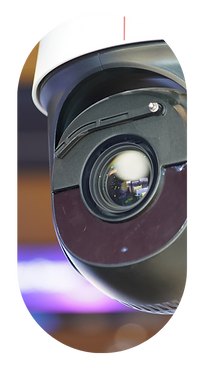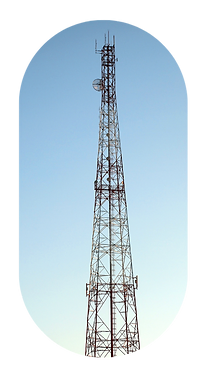THE QUAYCHAIN SOLUTION
QuayChain’s Edge Device Network (QED)– a Scalable Solution.
Our QED Network offers essential real-time insights through a proprietary combination of QuayChain Edge Devices, cameras, sensors and edge compute running machine learning applications over a secure, private LTE/5G network.

Smart Edge AI Cameras

QuayChain Machine Learning Applications

Private LTE/5G Network
Today’s Complex Supply Chain is Built on Technology for a Simpler Era.
Our interconnected world, e-commerce growth, and the increasing number of climate change events have made a resilient, sustainable, and secure supply chain more urgent than ever. And that’s a tall order because our current model was built over 30 years ago and was structured for simpler times–a time that assumed a predictable, linear supply chain. In fact, the supply chain is more like a supply web– and a complex one at that. Think about the new football you picked up last week at your neighborhood retailer. Chances are, once it is on a shipping container, the ball changed hands at least 10 times via several different carriers and modes of transportation before it even got unpacked at the warehouse and found its way to the shelf.
Why does it matter?
During the COVID-19 Pandemic, you likely became more aware of the inefficiencies in the supply chain and how these inefficiencies impact all of us – from giant retail companies to local communities and even in your own home. There are the obvious and visible problems that are evident in your day to day life– like empty shelves and longer delivery times caused by low inventory. But, the problem goes far deeper than that and the consequences of these inefficiencies have had lasting impacts on our environment;
trucks bottlenecking at ports or rail yards,
containers stacked on the roads outside warehouses and,
idling ships sitting for days just offshore are pumping out pollutants that significantly contribute to greenhouse gas emissions.
The world’s supply chain inefficiencies are far more than just inconvenient.
How did we get here and why can’t we just fix it?
Just like the supply chain itself, the solution is not linear. Remember that 30 year old infrastructure we were just talking about? Well, what you may not realize is that 40% of ports in the United States don’t even have reliable cellular networks and are filled with data-black holes. Even in major metropolitan areas like The Port of Long Beach, it is difficult to get your cell phone to connect. This lack of connectivity inhibits the real-time tracking of trade, slows down the supply chain, and is one of the root causes of the lack end-to-end supply chain traceability.
In addition, there is currently no infrastructure that allows supply chain operators, such as trucking and equipment companies, importers/exporters and ports to securely share data between them (whaaaaat?). Behind the scenes, retailers from Home Depot and Walmart to small local stores and freight forwarders, have developed labor-intensive workarounds that aren’t optimized for today’s complexity and ‘just-in-time’ delivery.
The result is that moving cargo around is labor intensive, unreliable, and requires a lot of manual intervention (think paper, pens and clipboard circa 1992). This approach simply cannot keep up with today’s velocity and, when any additional pressure is placed on the supply chain (a global pandemic, for example) everything backs up. But the problems were there long before the pandemic and are only getting worse.
For all supply chain operators, shifting to a more adaptive, connected supply chain means having real time, accurate data that is verifiable, and securely and easily shared.
So, now what? The Future of the Supply Chain.
Ports and industrial areas have traditionally been seen as necessary evils that spew pollution and negatively impact the people that live in the areas nearby (Hedge). But they don’t have to be.
Once connectivity is in place, ports can focus on laying the infrastructure to enable electrified/alternate fueled and/or autonomous vehicles for a cleaner, more environmentally friendly future for the entire supply chain process.
Connectivity provides adaptability in an ever-changing environment. That’s where we come in.

